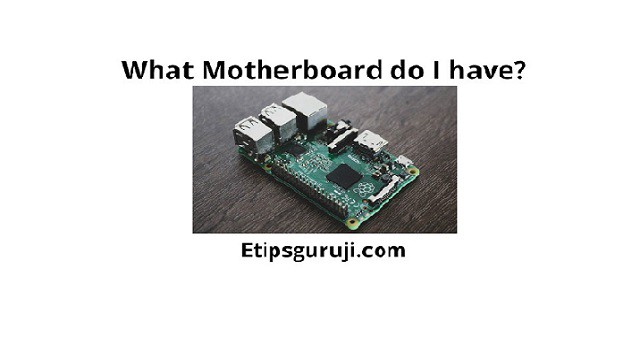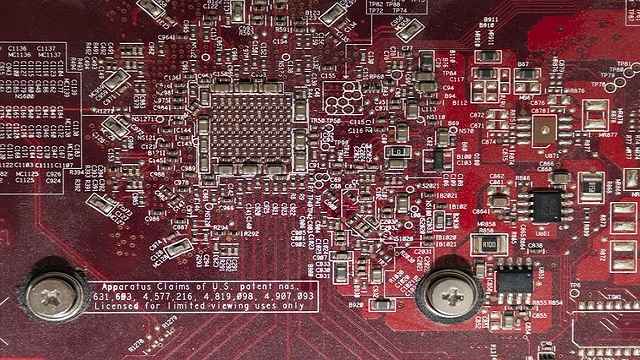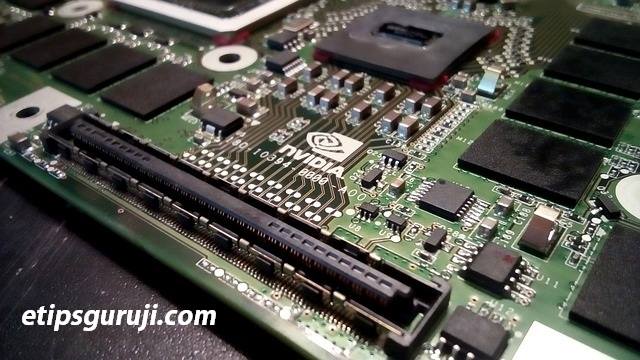What Motherboard do I have? – Step by Step Guide

The motherboard provides power and communicates with hardware devices. In this article, we will discuss how to identify what motherboard do I have? You can identify the model name and brand of your motherboard with different methods like visually, form factor, product listing, etc.
What is a Motherboard?

The motherboard is the main and most important board in the computer system. It has a printed circuit and acts as a foundation for the computer system. The major function of the motherboard is to communicate and provide power to RAM, CPU, and other hardware parts of the computer. The connectivity is provided with different kinds of motherboards depending upon the power and usage needs of the system.
Identify What Motherboard do I have?
Motherboard operates the computer and if you need to find out the brand and model of the motherboard using a computer system. You can do so in some great ways. Those are as follows:
The simple way to identify what motherboard do I have? I view it from the windows system using System Information Utility. To find the information with this utility, two ways are depending upon the update of windows in your system. So, follow the steps accordingly.
What Motherboard do I have in Windows 10 & 8?
In windows 10 & 8, you can follow three simple steps to get your answer to “what motherboard do I have?”
- Be on the desktop screen.
- Now, press Windows+ X shortcut key to open Power User Task Menu.
- The menu will open. Now, select to run from it.
- In the run dialogue box, type msinfo32 and click on enter to proceed.
You will get the information and utility answer for your query. Though, these steps are inoperative in windows 7 or its previous versions. So, you need to follow other steps as following:
What motherboard do I have in Windows 7?
- Click on the start menu.
- Now, open all programs.
- Go to accessories and then,
- System tools.
- Finally, click on System Information Utility. And
- You are done, get your information.
Identify what motherboard do I have with Documentation
When you buy a computer system, the package includes all the informatory notes and documents in it. So, it also includes information about the motherboard. You can also download PDF versions of these documents or notes from the computer manufacturer’s official website. Even from the website of the manufacturer of the motherboard.
Identify Visually- What motherboard do I have?
Do you know? Every motherboard has silk-screened its model name. The manufacturers print this information on the motherboard. The number is usually printed on the right lower part of the motherboard in bold and medium font size. In case, you don’t find the model number then go for locating the FCC identification number. So, you can find the model number from it.
Motherboard Form Factor
Till now, you must get the model number of the motherboard. So, if you want to get more information about your motherboard. Then go for the form factor. This form factor page has various sections containing detailed information to answer your query “what motherboard do I have?”
Driver Update or Chipset
The chipset information about your motherboard is available on the user manual provided in the information templates in packaging. Or you can find it on windows identification as well. So, once you know the brand and model of your motherboard. The detailed information about it is available on the official website of the manufacturer of the motherboard.
Specifications or Product Listing
If you are wondering all the information and asking the query “what motherboard do I have?” just to list the product and provide its specification. Then the model, brand, and its serial number is enough information for the needy. So, don’t focus and waste your time in finding more detailed information.
Repair or Replacement
As we know the motherboard has great importance in the operations of the computer system. So, if you are thinking to replace or repair your motherboard. Then, we will suggest you replace it with the new one because the manufacturing of the motherboard is very complex. So, it will take more time and cost to repair. Moreover, there is no guarantee that after repairing whether it will be effective again or not.
How to Choose the Right Motherboard for the Computer?
The Motherboard is known and acts as the backbone of the computer system. So, if you are looking to replace the old or dead motherboard. You need to consider the following factors to choose the right one.
Platform
The first thing is to choose the right brain for the computer. So, you can choose between Intel and AMD. Both companies are providing great product range and functions for entry-level to ultra-powerful brain features. Moreover, it provides regular updates with new features and functions.
Sockets and Chipsets

After selecting the right platform for your motherboard. Consider other important information that is to select sockets and chipsets. You need to check the type and functionality you desire.
Form Factor
Motherboards are available in different sizes and flexibility. So, it just depends upon your need which factors you desire in your computer system. Larger the size of the motherboard, the more functionality and component support it will provide. The factors to consider in form factor are size, expansion slots, RAM, RAM slots, GPUs, SATA ports.
GPU Support
To display the images and optimize the visual format, you need to check the GPU. The type and utility of the graphic card will decide the GPU output. For simple programming and use, you may use the simple low powered GPUs. But on the other hand, if you are using a computer system for gaming or more power demanding applications like video editing, Photoshop. Then, you need faster processing GPUs.

In choosing a motherboard, you also need to check the connecting factors for GPUs. Make sure, it provides the right kind of PCIe slots. So, it needs to check the GPU specifications and compare it with the specifications of the motherboard. The better fit of these two, the better performance it will give.
Related Articles:-
- Full Form of Computer- Its Generations, Parts and Types
- Flash Memory – How it Works, Types, Applications, Advantages
- Server- Types, Purpose, Advantage & Disadvantage
RAM
Everyone knows a simple full form of RAM, “Random Access Memory”. But the term is much wider than its simple full form. You need to decide the size of RAM needed by your computer system like 4GB, 8GB, 16 GB, etc. the capacity of the RAM size ranges from 1GB to 128Gb.
The motherboard has a specific slot for the RAM and it also can have a dual inline module for multiple RAMs. So, consider all factors and needs while choosing this part. If you are facing much trouble in choosing the size and multiple slots, then don’t worry. You can change it later as well.
Storage
To operate the functions and applications on your computer system. You need to store the data. As the answer to your query “what motherboard do I have” will store in your mind. In the same way, the brain of the computer will save the data.
The factor to consider is to select the type of drive to store. So, there are mainly two types of storage drives naming Hard disk drive and Solid-state drives. In these, the former spin platters to store the data. On the contrary, the latter use faster flash memory for storing.
The other factors deciding the storage factors are internal and external. It will also need better connectivity. So, let’s discuss how connectivity impacts the selection of storage and motherboard functions.
Connectivity
As per our previous discussions, there are different ways to connect different components and parts of the components including slots, storage RAM, PCIe, slots, etc. These components are host to other connections.
Some connect internally or others establish external connections. Some connect to the motherboards and others to different ports from the top or sides of the devices. The important thing to consider is to check that if these connectors can support fans, lighting systems, USB ports, etc. or not.
So, the major connections to check are Audio for the rear panel, front panel, digital audio header, front panel header, CPU power connectors, USB, firewire, display ports, audio jacks, Ethernet, Wi-Fi jack, SATA, etc.
Some FAQs
Is baseboard the same as the motherboard?
Yes, the baseboard is also the name of the motherboard. Some other names of the motherboard are the mainboard, mobo, logic board, etc.
How much RAM do I have?
- Be on the desktop of your computer.
- Now, right-click on the screen.
- Click on properties.
- The pop-up window will show the details of the RAM used and available.
Can any processor fit any motherboard?
Yes, any processor can fit any motherboard with the set of pins.
